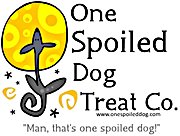As a dog owner, ensuring your furry friend’s health and well-being often starts with their diet. Among the myriad of decisions you make, choosing between natural and synthetic ingredients in your dog’s food and treats can feel overwhelming. Terms like “all-natural” and “scientifically formulated” dominate marketing campaigns, but what do they mean for your dog’s safety and nutrition?
This guide breaks down the key differences, benefits, and potential drawbacks of natural and synthetic ingredients, helping you make informed choices that prioritize your dog’s health.
Defining Natural and Synthetic Ingredients
Natural Ingredients
Natural ingredients are derived from plant, animal, or mineral sources with minimal processing. They include whole meats, fruits, vegetables, and naturally extracted vitamins. These ingredients are often praised for being closer to their original form, making them more recognizable and easier for a dog’s body to process.
Synthetic Ingredients
Synthetic ingredients are man-made or chemically processed to replicate natural compounds. These include artificial preservatives, flavors, and lab-produced vitamins like ascorbic acid (vitamin C) or tocopherol acetate (vitamin E). While synthetic components might sound less appealing, they serve practical purposes, such as enhancing shelf life or ensuring precise nutrient levels.
The Benefits of Natural Ingredients
-
Nutrient Density
Natural ingredients, such as fresh chicken or blueberries, often contain a spectrum of nutrients in their most bioavailable forms, offering added benefits like essential fatty acids and antioxidants. -
Fewer Artificial Additives
Natural dog food and treats tend to avoid artificial colors, flavors, and preservatives, reducing the likelihood of allergies or sensitivities. -
Transparency
Products with natural ingredients often feature shorter, clearer ingredient lists, making it easier for you to understand what you’re feeding your dog. -
Digestive Health
Natural fibers from whole fruits and vegetables can promote better digestion, while unprocessed proteins are gentler on a dog’s stomach.
The Role of Synthetic Ingredients
-
Stability and Longevity
Synthetic preservatives, such as BHA and BHT, extend the shelf life of dog food, ensuring it remains safe and fresh for longer periods. -
Precision in Nutrition
Synthetic vitamins and minerals allow manufacturers to create diets with precise nutrient balances, which is particularly useful for addressing deficiencies or specialized dietary needs. -
Cost-Effective Solutions
Producing synthetic nutrients is often more economical, allowing for affordable, complete, and balanced dog foods that meet industry standards.
Potential Concerns with Natural Ingredients
While natural ingredients offer many benefits, they’re not without challenges:
- Contamination Risks: Natural products, such as raw meats or grains, are more susceptible to bacterial contamination or mold that can produce harmful toxins.
- Nutritional Variability: Nutrient levels in natural ingredients can vary due to environmental factors like soil quality or processing methods.
- Shorter Shelf Life: Without synthetic preservatives, natural products may spoil faster, requiring careful handling and storage.
Potential Concerns with Synthetic Ingredients
Synthetic components, while functional, have their own risks:
- Allergies and Sensitivities: Some dogs react to synthetic additives like artificial colors or flavors.
- Digestibility: Certain synthetic nutrients may not be as easily absorbed or utilized by your dog’s body compared to natural alternatives.
- Controversial Preservatives: Ingredients like ethoxyquin or propylene glycol have faced scrutiny for potential health risks, though their use is regulated.
Balancing Natural and Synthetic Ingredients
Achieving the right balance between natural and synthetic components ensures your dog receives a safe and nutritious diet. Here’s how to make thoughtful choices:
1. Consider Your Dog’s Needs
Factors like age, breed, activity level, and health conditions should guide your decisions. For instance:
- Senior dogs may benefit from synthetic glucosamine for joint health.
- Active puppies may thrive on diets rich in natural proteins and fats.
2. Focus on Quality
High-quality ingredients—whether natural or synthetic—are essential. Choose reputable brands that prioritize transparency, use certified manufacturing practices, and undergo independent testing.
3. Read Labels Carefully
Avoid vague terms like “meat by-products” or “artificial flavors.” Opt for specific, high-quality components, whether natural (e.g., chicken, carrots) or synthetic (e.g., vitamin D3).
4. Consult a Veterinarian
A vet or pet nutritionist can provide expert advice tailored to your dog’s unique dietary requirements, helping you choose foods and treats that align with their health needs.
Choosing Safe and Nutritious Treats
When selecting treats for your dog, prioritize those with simple, natural ingredients. Popular options include:
- Freeze-Dried Meats: A single-ingredient choice free from additives.
- Vegetable-Based Treats: Sweet potato or carrot chews provide antioxidants and fiber.
- Functional Treats: Fortified with beneficial additives like omega fatty acids or glucosamine, functional treats support specific health goals.
Conclusion
The natural vs. synthetic debate doesn’t have to be all or nothing. Both types of ingredients have their place in ensuring your dog gets a safe and balanced diet.
- Natural ingredients provide wholesome, nutrient-rich options that are easy to digest and appealing.
- Synthetic components enhance stability, affordability, and precision in nutritional formulations.
Ultimately, the safest choice is one that prioritizes high-quality ingredients, transparency, and your dog’s individual needs. By understanding the roles of both natural and synthetic ingredients, you can make confident decisions that support your dog’s long-term health and happiness.
When in doubt, consult a trusted veterinarian or nutritionist to guide you toward the best choices for your furry friend.

